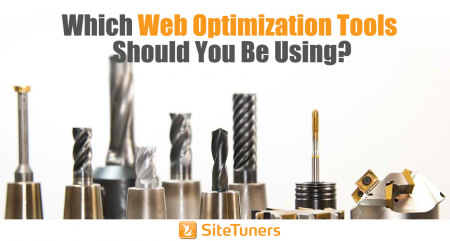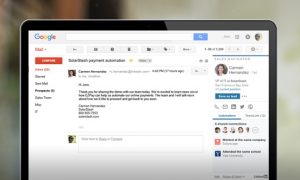
Depending on how big your company and your web site is, your prioritization will be different, and your toolset will be different. But most of the time, that difference is based on guesswork rather than a model or a framework – the tools just happened to be there at the time of implementation, so that’s what has been used.
That is less than optimal. The toolset you use should be based on the targets that you have, which is in turn based on the size and maturity of your online marketing organization. The more mature you are, the more you’ll be able to connect the visits to the impact. Here’s a quick rundown of the tools you can use depending on how mature your online marketing team is.
1. The Starter Toolset
If your organization is just starting out and driving traffic to the site is the main goal, you probably need two tools the most:
- Google Analytics (out of the box)
- Google Webmaster Tools
This is not a knock on Google Analytics as being the “kiddie” version of the Site Catalysts, WebTrends, and other paid clickstream tools – Google Analytics is something that we highly recommend, even for more mature organizations, although how you’ll use Google Analytics will vary drastically between when you’re starting out and when you’re more mature. But when you’re starting out, it definitely helps that your tool is free, and there are tons of resources out there about how you can use the tool.
You’ll need Google Webmaster Tools to check basic organic keywords, and to upload your sitemaps. You’ll need basic Google Analytics reports, without Advanced Segments, to check the traffic sources, to see if your organic traffic is rising, and if your overall page views and visits are rising.
How do you know you’re in this bucket?
- Visits and page views are the key metrics being reviewed
- Branding is the main goal
- Getting more pages indexed by Google is one of the site’s main goals
It’s okay to start in this bucket, but you shouldn’t stay there very long. After all, views and visits are fine, but you can have very low revenue, visitors who freaking hate your site, users who leave without doing anything, and still have a decent amount of traffic. If you’ve been stuck there a while, it’s time to overhaul your goals and tools.
2. The Basic Toolset
When you move from having a starter toolset to having a basic toolset, it’s not like you give up the old tools. You’ll still use things like Google Webmaster Tools – the old tools will still be there, but they will not take up the bulk of your time. When you have a basic toolset, you’ll probably spend most of your time using these tools:
- Google Analytics (Advanced Segments, Custom Reports)
- iPerceptions
In place of Google Analytics, you could have other clickstream tools. In place of iPerceptions, you can have Google Surveys, OpinionLab or ForeSee. Don’t think about the specific tool, so much as the class of tools you need.
From clickstream tools, you would not be using basic reports anymore. You would be using Advanced Segments or their counterparts in other tools, you would have an analytics model, and you would be improving conversions with data rather than going for just page view and visits.
For your survey or voice of customer tool, you should know some variant of the items below:
- What are you looking for on the website?
- How did you navigate the website?
- Did you find what you were looking for?
- If no, why not?
- If you didn’t find what you were looking for, what did you do next?
This leads to intent and task accomplishment data – the percentage of your users who are coming to your site to perform tasks, and how successful they are at performing those tasks. This is a big step up from views, visits, and branding, but there’s still more to do to improve the site.
How do you know you’re in this bucket?
- Page values, leads, and conversions are the key metrics being reviewed
- User satisfaction is the goal
- Getting high task accomplishment rate or task success rate is one of the site’s main goals
If you have reached this level of maturity, that’s a very, very significant improvement over the starter toolset. Many companies never get here – but there’s more work to be done.
3. The Testing Toolset
To get to the point where you can start testing and improving conversions, two things are necessary:
- You should have gotten enough traffic to run tests (one of the goals of the starter toolset)
- You should know enough about your visitor’s tasks to intelligently make challenger pages (one of the goals of the basic toolset)
If you have had significant progress with both, it’s time to upgrade to the testing toolset:
- Google Analytics (Advanced Segments, Custom Reports)
- iPerceptions
- Optimizely
You should still be refining the site based on segment data, you should still be changing the site based on intent and task accomplishment rates, but on key parts of the web site where you have significant traffic and conversions, you should be running split or multivariate tests to improve performance.
You can use Google Content Experiments instead of Optimizely, just as you can use different clickstream or Voice of Customer tools. But at this point, you should be creating challenger pages to yoru champion pages to see which ones can be outperformed, and this should be part of your team’s routine rather than project-based one-offs.
How do you know you’re in this bucket?
- Page values, leads, and conversions are the key metrics being reviewed
- User satisfaction is a goal
- Tests are running to improve conversion points in key areas
- Getting high task accomplishment rate or task success rate is one of the site’s main goals
There are more advanced setups when you’re using the testing toolset, with user testing heavily deployed, marketing automation feeding CRM systems, and dynamically generated content but that’s a separate discussion altogether.
The Right Tools for the Job
It pays to understand what your goals are and where you are in terms of online marketing maturity before you select your tools. The tools are only going to be useful if they are used at the right stage – with the right set of experts looking at a specific set of goals.
If you can look at your organization and honestly review where you are in terms of online marketing maturity, the tools you’ll end up using will be so much more appropriate than what they are today.
(273)
Report Post




